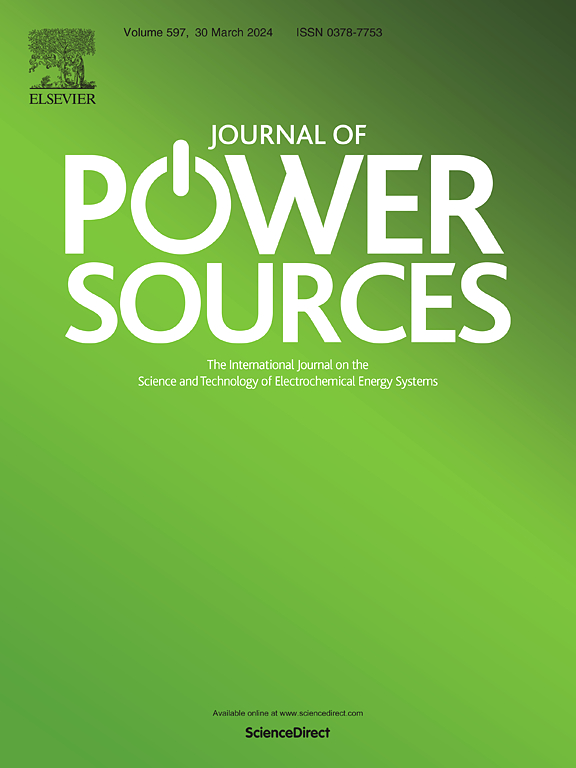Dissolution of molybdenum current collector as Crucial and Undesired process in aluminum batteries
IF 8.1
2区 工程技术
Q1 CHEMISTRY, PHYSICAL
引用次数: 0
Abstract
Rechargeable aluminum batteries (RABs) using Lewis acidic aluminum chloride–1-ethyl-3-methylimidazolium chloride (AlCl3-EMImCl) ionic liquid electrolytes are promising alternative energy storage systems. Molybdenum (Mo), often used as a current collector, is typically considered stable with negligible redox activity in such electrolytes. However, this study shows that Mo reacts with AlCl3-EMImCl (1.5:1) electrolyte. When Mo-foil or powder is immersed, the initially colorless/yellowish ionic liquid turns red, indicating Mo dissolution. Magnetometry confirms the presence of Mo species with localized unpaired electrons in the red liquid, not found in metallic Mo. UV–VIS spectroscopy reveals Mo3+ and Mo4+ species formation. ICP-OES shows 1.99 ± 0.06 mass-% of Mo dissolves in the electrolyte. Due to Mo's instability, cyclic voltammetry (CV) and galvanostatic cycling with potential limitation (GCPL) show increasing redox activity over cycles, similar to unstable platinum (Pt), with a discharge capacity of ∼136 mAh.g-1 at 20 mA.g-1 after 100 cycles. X-ray photoelectron spectroscopy (XPS) indicates three oxidation states of Mo4+/5+/6+ on the aluminum negative electrode, due to Mo-cation migration and adsorption. Covering the Mo current collector with electrochemically inactive Co3O4 suppresses Mo reactivity by reducing active Mo surface area. These findings demonstrate Mo's significant impact on AlCl3-based RABs' electrochemical performance, which is not negligible.

求助全文
约1分钟内获得全文
求助全文
来源期刊

Journal of Power Sources
工程技术-电化学
CiteScore
16.40
自引率
6.50%
发文量
1249
审稿时长
36 days
期刊介绍:
The Journal of Power Sources is a publication catering to researchers and technologists interested in various aspects of the science, technology, and applications of electrochemical power sources. It covers original research and reviews on primary and secondary batteries, fuel cells, supercapacitors, and photo-electrochemical cells.
Topics considered include the research, development and applications of nanomaterials and novel componentry for these devices. Examples of applications of these electrochemical power sources include:
• Portable electronics
• Electric and Hybrid Electric Vehicles
• Uninterruptible Power Supply (UPS) systems
• Storage of renewable energy
• Satellites and deep space probes
• Boats and ships, drones and aircrafts
• Wearable energy storage systems
 求助内容:
求助内容: 应助结果提醒方式:
应助结果提醒方式:


